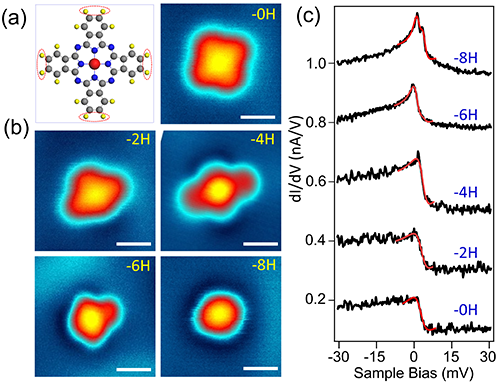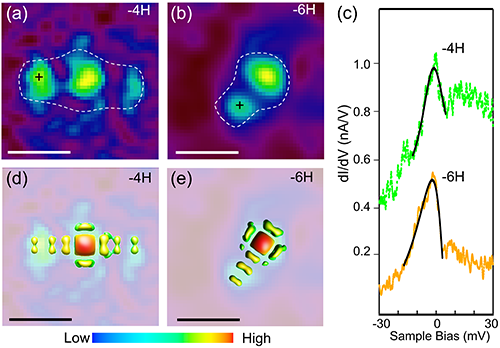Revealing the Atomic Site-Dependent g Factor within a Single Magnetic Molecule
Date:16-07-2015 Print
The Landégfactor of a free atom determines the effective magnetic moment of an electron or atom with both spin and orbital angular momentum, which can be calculated by Landé formula. For a transition metal ion in the crystal field, the spin-orbital interaction can mix the non-zero orbital angular momentum of excited states with the “pure spin” ground state, resulting in an effective gfactor. Thus, the ability to probe the fine structure of the gfactor allows us to understand the internal spin properties of a magnetic system, such as spin-orbital interaction. However, for molecular systems, traditional experimental methodsfor gfactor measurement like EPR can only provide averaged information over many molecules. The determination and mapping of gfactor within a single molecule at atomic scale has been lacking, which is very critical in order to reveal local fine spin interactions.
Recently, Liwei Liu, Kai Yang and their co-workers from Prof. HongjunGao's group at the Institute of Physics, Chinese Academy of Sciences, in collaboration with Prof. Min Ouyang (University of Maryland), Prof. Werner Hofer (Newcastle University) and Prof. Antonio Castro Neto (National University of Singapore), revealed an inhomogeneous distribution of gfactor inside a single molecule for the first time.Firstly, they detached single hydrogen atoms of Mn-phthalocyanine (MnPc) by STM manipulation to alter the molecular structure and the electronic properties of the molecule. The dehydrogenated MnPc exhibits extended Kondo effect. This extended Kondo effect is attributed to spin polarizations induced by symmetry breaking of the molecular framework, as confirmed by density functional theory based calculations. Measuring the evolution of the Kondo splitting with applied magnetic fields at different atomic sites, they found a spatial variation of the gfactor within a single molecule. The existence of atomic site-dependent gfactors results from different spin-orbit coupling of molecular orbitals within the molecule. As both molecular orbitals and their associated gfactor are relevant for the chemical environments, these results provide a new route to explore the internal electronic and spin structure of complex molecules, hard to achieve otherwise.
This work has been published in Physical Review Letters 114, 126601 (2015), selected as the Cover Story and an Editors’ Suggestion. This work was supported by grants from the National Science Foundation of China, National “973” projects of China, and the Chinese Academy of Sciences.
 |
| FIG. 1. Manipulation of the molecular Kondo effect by systematic dehydrogenation. |
 |
| FIG. 2. Spin polarization properties of dehydrogenated MnPc molecules. |
 |
| FIG. 3Mechanism of observed extended Kondo effect. |
 |
| FIG. 4. Site-dependentgfactor of a -6H-MnPc molecule. |
 |


